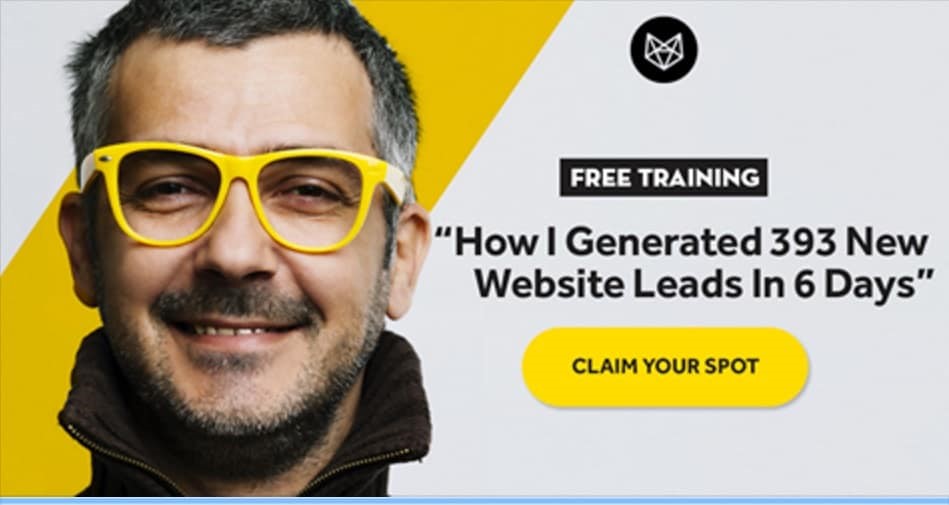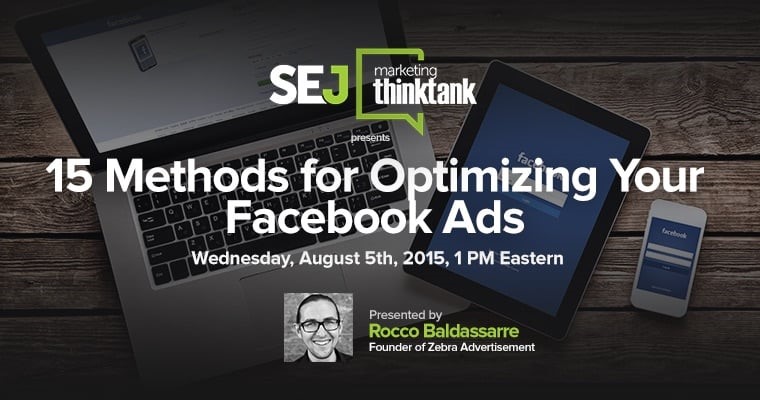
Webinars Are The Bomb Right Now: 9.5 Best Practices For Webinar Invites
If You Can’t Get People To Register For Your Webinar, You Won’t Drive Leads – The Invite Is Everything
Almost everyone has run or attended a webinar over the past six months. Once COVID-19 settled in, webinars and online events exploded in popularity, registration and attendance.
In March, ON24 found that the number of webinars on its platform increased by a whopping 330%, and the number of attendees doubled based on yearly statistics.
But now that business is starting to return to the new normal, our research has shown that webinar registration and attendance is starting to come back to pre-COVID levels.
The key to sustaining high-performing webinars is by applying all or most of these best practices.
1. Subject Line
It’s everything when it comes to email and webinar invites. If your subject line is boring, uninspiring and flat, your registration and attendance numbers will suffer.
Make sure your subject lines aren’t too long. Keeping the copy between 40 and 60 characters prevents it from getting cut off in most email systems. Also, make the copy personal, because this drives an 18% improvement in open rates.
The key to crafting a subject line that drives registration and attendance is to get your audience’s attention. Disrupt their status quo, compel them to attend and make an emotional connection.
Using the word webinar in the title helps. If you have a known speaker in your event, using their name helps, too. But above all, create an event that can’t be missed.
Here’s an example of a subject line from an email from a real company (the name has been concealed to protect the innocent):
Webinar This Wednesday: “Reshaping Your Workforce for the Future”
Let’s fix this up. First, if characters are important, we don’t need Wednesday in the subject line; the body copy will clearly show when the webinar is happening. This is a detail better suited for the body copy. Here is an improved subject line:
[Webinar]: HR Gurus Bob Hines and Kim Neil Reveal the 10 Secrets Required to Reshape Your Workforce
It’s a little long, but it’s a big improvement. We’ve featured the speakers, made it feel more exclusive, given it some specificity in terms of content (10 secrets) and added an element of excitement.
2. Images
Many marketers have limited resources, so they go with existing email template header designs that might not be best suited for webinar invites.
Our first suggestion is to consider designing an email template that includes some of the webinar details. Most people prefer to look or watch rather than read. By designing a banner, you’ll give them the information in the format they prefer.
Here’s a good example:

Great headline, and it’s supported by the free training element plus a strong call-to-action, Claim Your Spot. I’d prefer to have the name of this guy in the image, but most of the people getting the email probably know who he is.
Here’s one more we found that we also liked:

3. Email Headline
You might think we already talked about this, and this is a common mistake most people make. They simply take the subject line along with the name of the event and restate those details here. That’s fine, but there is an opportunity to add more value in the headline.
Let’s go back to the webinar Reshaping Your Workforce for the Future. We suggest something like this for the email headline copy:
If you’re wondering what tomorrow’s workforce will look like, we’ll show you in our webinar, The 10 Secrets Required to Reshape Your Workforce.
It provides additional clarification, it’s more compelling and it reiterates the topic if someone missed the graphic banner.

4. What’s In It For Them
Consider this a commercial break, because this isn’t about the technical execution but about how you strategize and plan to market your webinars. Most people talk about what’s in the event and their own content.
Instead, make all of your communication about what’s in it for your potential attendees. What will they learn? What will they get? What will they see you do? How can they apply it at their companies? How will it benefit their organizations or them personally?
Run your invite through our red/blue test. Circle in red all the times you talk about you, your company or the pronouns that refer to you, like us, our or we. Then circle in blue all the times you talk about your clients and your attendees, and when you use pronouns that refer to them, like the words you and yours. You should have 80% blue circles and 20% red circles.
5. Invite Copy
Now we can apply that new “what’s in it for them” thinking in our invite copy. Don’t go back to details. Instead, focus on what they’ll get out of attending.
Here’s an example of some reworked copy for the webinar Reworking Your Workforce for the Future:
Ever wanted to have a crystal ball and see the future? How many times have you said, “If only I could just ask an expert what they think?” Now you can.
Join us at our exclusive webinar hosted by Bob Hines from C&C and Kim Neil from Hive Benefits and they’ll give you the insights you need to manage through these uncertain times. Stay tuned for the last 10 minutes, where we open the floor for you to ask them all your burning questions.
A little thought and some extra copywriting can go a long way.
Next, the bullet points. These are what people read first and spend the most time on. Remember, make the copy all about your attendees and try to use very active and productive verbs to lead each bullet.
Here’s what they had:
This webinar will teach:
- How to evaluate your employees’ skill set needs
- Proven approaches to evaluate your talent that allow you to make the right decisions on who you want on your team
- Four-step process for success
- HR/legal issues around changes that need to be made
Here’s the upgrade:
In this webinar you’ll learn:
- Innovative ways to evaluate your employees’ skill sets given the new requirements of your business
- Proven approaches for evaluating talent to inform your staffing decisions
- A unique four-step process for working with your team remotely
- How to avoid HR and legal issues that might occur from changes you need to make in the business
- What challenges might be on the horizon related to COVID-19, workforce laws and new government regulation
A couple of notes on our changes. First, use the word learn instead of the word teach, as learning is what your attendees want. Second, try to keep your bullets to either three or five, because people process information in bunches. This is your chance to sell the event, so go big or go home.
6. Call-To-Action
This is where you have to shine. It doesn’t matter how many people read the email or click on the email invite, it only matters how many people register for the webinar and then ultimately attend.
There happens to be a ton of data to support these call-to-action (CTA) upgrades. Studies have shown that CTAs written using first-person pronouns perform better than those written in second-person pronouns. So instead of saying “Reserve Your Seat,” try saying “Reserve My Seat.”
Here are some other options you should consider using or potentially testing:
- Reserve My Spot
- Claim My Seat
- Save My Seat
- Save Me A Seat
- I’m In!
Change your “Register Here” button to one of the CTA copy ideas above and you will see an improved registration rate.

7. Video
It’s hard to argue against using video. Copy in a webinar email is limiting. You can tell a much more exciting, disruptive, compelling and emotional story with video.
There is no rule that says you can’t have your speakers do a short (less than 30 seconds) intro video around the content in your webinar, what your attendees will learn and why it is critical that they attend.
Consider making a new video for each of your webinar reminder emails. This will prevent your audience from becoming email blind to what looks like just another email reminder for another webinar. If the video is different each email, you’re diversifying your content and encouraging your recipients to click and watch.
Here are some considerations if you’re going down the path of using video:
- Your presenters must be exciting, compelling and engaging
- The quality of the video must be exceptionally good
- The sound quality must be excellent
- Keep it short and simple
- Include closed captions
We recommend a quick script that you hone until it’s excellent and then make sure your presenter is able to deliver it flawlessly.
If your video is weak, you’ve sunk your webinar. Who would attend a webinar with a subpar speaker?
8. Social Proof
Attending a webinar might not seem like a big deal to you, but when you’re staring at the registration page, everything changes. In the Square 2 vernacular, we call the webinar a moderate risk offer. This means your prospective attendee is feeling at least some anxiousness around signing up.
First, they have to give you an hour of their precious time. Especially now, we’re all extra busy, so an hour out of the day is huge.
Next, they don’t know you well yet, so they might be wondering if this is going to be a sales pitch. We’ve all been to webinars that sound like learning opportunities only to be sales presentations.
Finally, they don’t know your speakers unless you’ve been lucky enough to secure a celebrity or even an industry-level celebrity, so they are wondering if the speaker is going to be good enough to hold their attention for an hour.
To deal with these concerns, provide some social proof. In your email invite, include some relevant testimonials:
“I’ve attended Bob Hines’ workshops half a dozen times and he’s always impressive. He always provides highly valuable educational content and I’ve never been disappointed.”
- Mark C., CEO, Mid-Sized Manufacturing Company
“The webinars and workshops offered by C&C are always right on point with what’s going on in our world. I always try to attend these.”
- Jill B., VP of HR, MMM Enterprises
Even a few blind testimonials like the first one might be enough to help most of your invites to feel better about attending. You can also get a larger set of social proof points and post them on your webinar invitation landing page with a link to those in your email, but having a few in the email is the best approach for conversion optimization.
9. Reminders
A quick point here. Remember, registrations are great for building your list, but attendees are the goal. You want people to be exposed to your company, your thought leadership and your content. You want to give them an offer that continues the conversation. If they register and never attend, it’s mission not accomplished.
Reminder emails work wonders here, and in conjunction with calendar integrations, they are key to getting people into your event.
Set a schedule for reminders. Here’s the one that works best for our clients:
- One week out
- Two days out
- One day out
- Day of the webinar
- One hour before the webinar
It might sound like a lot, but it’s important. It’s just too hard to skip virtual events in favor of work, social responsibilities or personal conflicts. The more you remind people, the higher your attendance rate.
Finally, most of us are hooked to our calendars. We go where the calendar tells us to go. Your webinar registration must feature the ability to add your event directly to a registrant’s calendar, whether it’s Google, Outlook or something else.
Good news: Plenty of tools work as plugins within your registration page so it is easy for someone to instantly add your event (along with the event details, like login links) right to their calendar.
Make this a mandatory part of your registration process and you’ll get more attendees to your event.
9.5. Analytics
What would a blog of mine be without a section on analytics associated with your webinar program? We’ve covered all the other pillars in Square 2’s execution methodology. Strategy, tactics, technology and now analytics.
The basic analytics are straightforward:
- How many people did you invite?
- How many people registered?
- How many people attended?
You can look at analytics associated with the invitation process:
- Open rate
- Click-through rate
- Registration rate
- Registration page views
- Conversions on the registration page
- How long they are on this page
- Lucky Orange heat map data on the registration page
But there are some areas in event analytics that you might want to consider, too:
- How long did they stay in the webinar?
- When did people leave?
- Were there any insights with the timing around when people left the webinar?
- How many watched live and how many watched it on-demand?
- Was there any difference in the audience engagement data live vs. on-demand?
We typically recommend setting up some standard dashboards for webinar campaign and webinar event analytics that can be compared event by event and over time.
Webinars are going to be an ongoing and effective way to help educate, advise and guide your prospects. They are highly efficient and highly educational. They help prospects get to know, like and trust you, your company and your products/services.
Ramp up execution and go from 20 registrants with 10 attendees to 2,000 registrants with 1,500 attendees. If you want more information on webinars, we have another detailed article here.

CEO and Chief Revenue Scientist
Mike Lieberman, CEO and Chief Revenue Scientist
Eliminate Hit-or-Miss Marketing Moves
Get advice, tips, tools and guidance to generate more leads for your company in this weekly email newsletter.



Eliminate Hit-or-Miss Marketing Moves
Get advice, tips, tools and guidance to generate more leads for your company in this weekly email newsletter.













